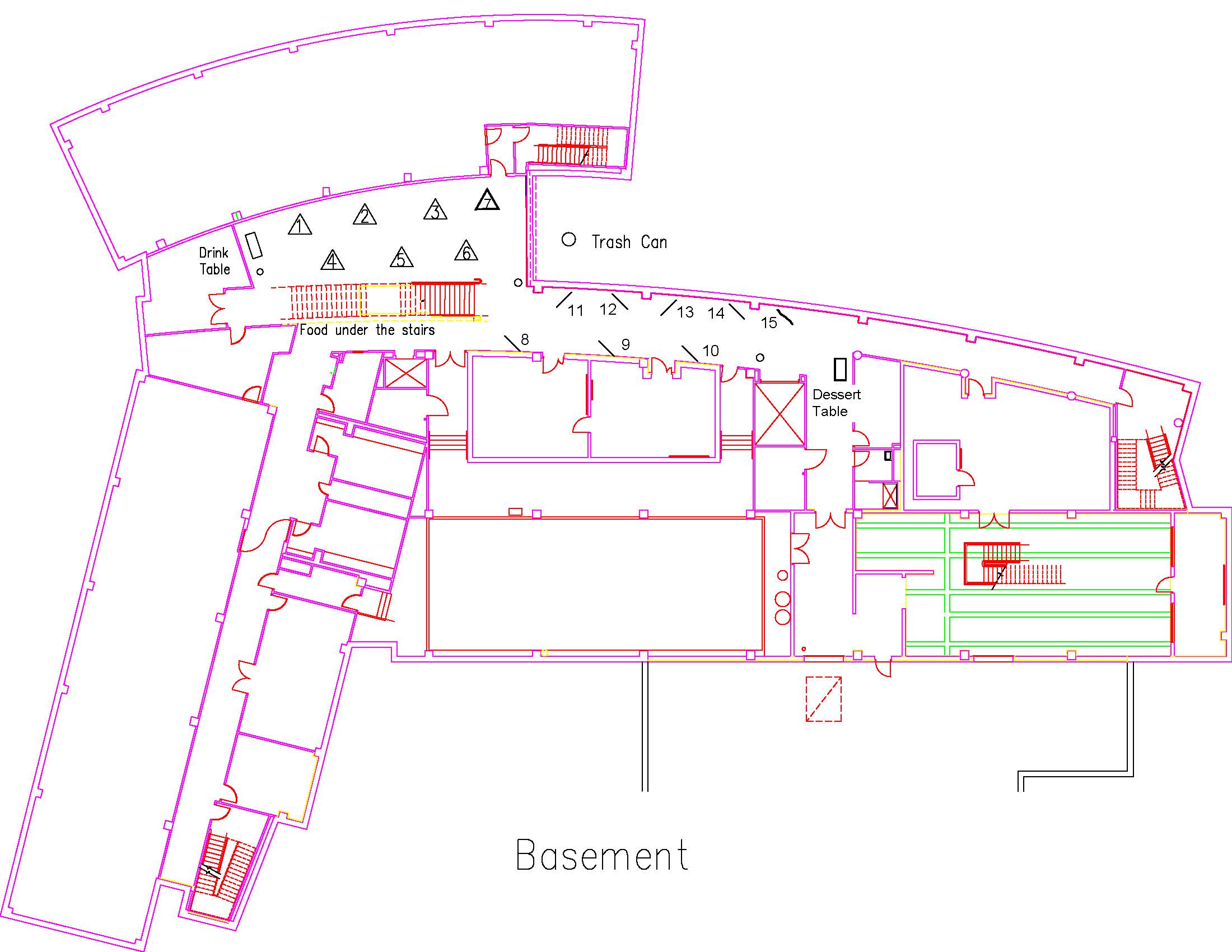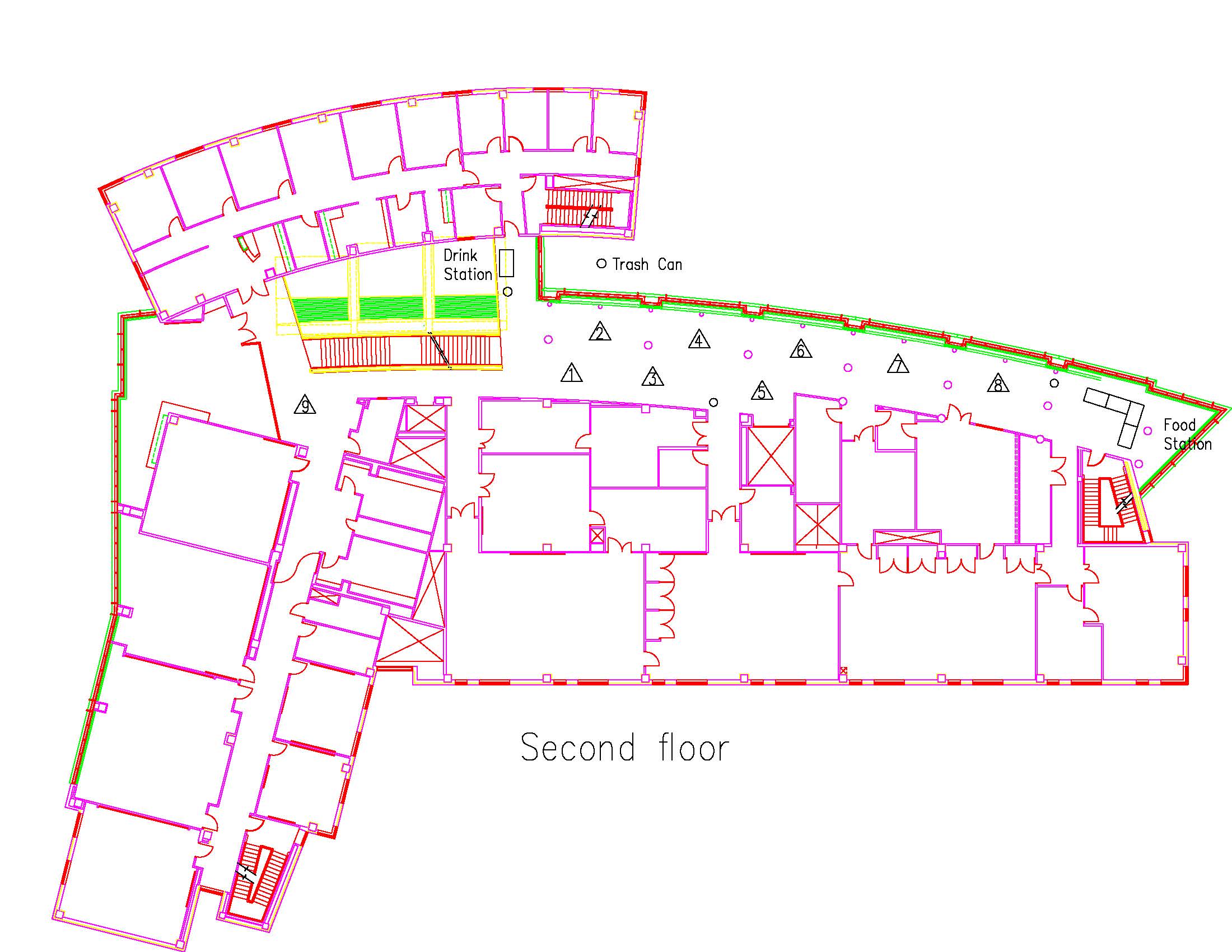NTDT2019FREDERICKSON39661 NTDT
EAT2WIN: A PILOT STUDY ASSESSING ATHLETES BEHAVIORS, ATTITUDES, AND ADHERENCE USING A MOBILE APPLICATION
Type: Undergraduate
Author(s):
Jade Frederickson
Nutritional Sciences
Ginny Ho
Nutritional Sciences
Advisor(s):
Lyn Dart
Nutritional Sciences
Brooke Helms
Interdisciplinary
Jada Stevenson
Nutritional Sciences
Anne VanBeber
Nutritional Sciences
Location: Session: 2; Basement; Table Number: 1

View PresentationBackground: Athletes increasingly skip meals because they lack time or knowledge to prepare their own meals; mobile applications have been proposed as a potential solution to this problem. Adherence to mobile app tracking may vary, but self-motivation and nutrition knowledge has been shown to increase chances of behavior change while using an app.
Objective: Determine if female college athletes’ nutrition/fueling behaviors changed over four weeks by utilizing a mobile application for tracking fueling practices.
Design: Pilot study with cohort of 17 female TCU NCAA Beach Volleyball athletes.
Methods: Pre and post-study questionnaires examined attitudes toward mobile applications, dietary behaviors, and frequency of fueling habits. Athletes also attended a pre-study training session about utilizing the Eat2Win app. Data analyses included recorded frequency of application usage and logged meals per/day plus impact on dietary behaviors/fueling habits. Study procedures were approved by TCU IRB. Participant informed consent was obtained. Data were analyzed to meet study objectives (SPSS, p<0.05).
Results: Most athletes (82%) disliked using the Eat2Win app, where app usage decreased from 88% in week one to 18% app usage at the completion of the study. Reasons for the pronounced decrease in usage included frequent app crashes, too time consuming, and limited phone storage space. Additionally, results did not show improvement in athletes’ eating habits with app usage. Although pre-study results showed 42% of athletes did not consistently eat breakfast and/or eat/drink something every 3-4 hours, those athletes who reported greater frequency of eating breakfast and/or every 3-4 hours or refueling one hour after practice, maintained consistent positive eating behaviors throughout the study. These same athletes also reported greater energy levels overall (r=.671; p=0.01).
Conclusions: Study results emphasize the importance of implementing user-friendly mobile apps for athletes that are time-use efficient and offers calorie-counting and picture logging functions to promote change in dietary and refueling practices.
NTDT2019KIEFER3939 NTDT
DESCRIBING BEVERAGE INTAKE CHOICES AND FACTORS RELATED TO BEVERAGE INTAKE AMONG COLLEGE STUDENTS
Type: Undergraduate
Author(s):
Ali Kiefer
Nutritional Sciences
Macy Essman
Nutritional Sciences
Chris Villalpando
Nutritional Sciences
Advisor(s):
Gina Hill
Nutritional Sciences
Location: Session: 1; 2nd Floor; Table Number: 2

View PresentationBackground: More than 66% of American adults are overweight or obese. Sugar sweetened beverages (SSB) are a primary source of added calories and may promote weight gain.
Methods: This study was approved by the Institutional Review Board. A random sample of college students provided informed consent before completing an electronic survey that included questions to determine participants’ demographics, self-reported height, weight, physical activity level, total beverage intake, health perceptions, and factors affecting beverage choices. Beverage kcals and intake were determined using the validated BEVQ15 Beverage Questionnaire.
Results: Participants (N=103) were 19.6+/-1.9 years of age with a healthy mean BMI of 23.3+/-3.7. Almost 70% (n=48) had a healthy BMI, ~25% (n=17) were overweight, 6% (n=4) were obese, ~81% (n=83) reported that they were lightly to very active, and 5% (n=5) reported that they were sedentary. Average beverage kcals/day (BKD) was 180.8+/-156.2 and ranged from 0-795 BKD. Among participants (n=75) that completed the BevQ15, 33% (n=26) consumed <100 BKD, 47% (n=35) consumed 100-<300 BKD, and 19% (n=14) consumed > 300 BKD. Normal BMI participants consumed 191 BKD, overweight participants consumed 204 BKD and obese participants consumed 69 beverage BKD. There was no significant correlation between BMI and BKD. Three primary factors which contributed to beverage choices were taste, quenching thirst, and health reported by 54% (n=55), 46% (n=47) and 44% (n=45), respectively. The factors health and calorie content were correlated (r=.23, p<0.05).
Conclusion: Participants had an average healthy BMI and were active. No significant correlations were detected between BMI and BKD. Obese participants consumed fewer BKD than healthy and overweight participants. This lower BKD contribution may be a method used to lose weight. Although calorie content was less frequently cited as a primary factor of beverage choices, participants that identified health as a determining factor were more likely to consider calorie content.
NTDT2019MCKNIGHT53355 NTDT
THE RELATIONSHIP BETWEEN COFFEE CONSUMPTION ONSET AND PERSONAL WELLBEING IN UNDERGRADUATE COLLEGE STUDENTS
Type: Undergraduate
Author(s):
Noel McKnight
Nutritional Sciences
Caroline Green
Nutritional Sciences
Advisor(s):
Rebecca Dority
Nutritional Sciences
Location: Session: 2; Basement; Table Number: 4

View PresentationBackground: Americans’ choice in caffeinated beverages, consumption amounts, and frequency of consumption varies depending on factors like age, demographics, education level, and social status. Caffeine has shown to increase energy, alertness, attentiveness, and sociability. Research shows that the amount of caffeine consumed by adolescents has increased 70% in the past 30 years.
Objective: The objective of this study was to determine the relationship between the onset of coffee consumption, amount of current coffee consumption, and personal well-being. It was hypothesized that an earlier onset of coffee consumption would have a positive correlation to increased coffee consumption and a negative effect on personal well-being later in life.
Methods/Design: An online survey was administered to college students, age 18-24. Participants were recruited via social media. The survey assessed participants’ history of coffee consumption, current coffee consumption, and perception of impact on appetite, mental status, mood, sleep patterns, and overall health. Data was entered into SPSS after survey responses were collected.
Results: Upon surveying participants (N=95), there were strong positive correlations (p<0.01) between the onset of coffee consumption, amount consumed at onset, and current consumption level. Notably, onset of coffee consumption was likely to occur during significant academic years, such as the first year of college (15.8%, n=15) and first year of high school (13.7%, n=13). Approximately 67% (n=64) reported consuming 1-2 cups/day at onset of consumption. Additionally, 52.6% (n=50) report that coffee consumption benefits their overall mood, while 41.1% (n=39) claim it has no effect on overall health and well-being.
Conclusions: The onset of coffee consumption is commonly seen in times of change, such as significant academic years. Consequently, participants also agreed that caffeine consumption benefits their mood above other qualities surveyed. Further research relating to other types of caffeinated beverages and foods would provide more conclusive results about onset and wellbeing.
NTDT2019PEDDIE7490 NTDT
THE PERCEPTION OF TYPE 1 AND TYPE 2 DIABETES MELLITUS AMONG COLLEGE STUDENTS AGE 18-24
Type: Undergraduate
Author(s):
Kendall Peddie
Nutritional Sciences
Claire Koskie
Nutritional Sciences
Advisor(s):
Rebecca Dority
Nutritional Sciences
Location: Session: 2; Basement; Table Number: 3

View PresentationBackground: Diabetes Mellitus is a chronic condition that affects the body’s ability to use energy in food. Diabetes impacts more than 170 million people worldwide. Previous research suggests that people with diabetes report feeling stigmatized and that there is a lack of understanding by the public.
Objective: The objective of this study was to determine the level of diabetes knowledge among college students and their perception of people with diabetes. It was hypothesized that there is a lack of diabetes education among this group and that they would have an overall negative perception of people with diabetes.
Methods: An online survey was developed which assessed participants’ knowledge of Type 1 and Type 2 Diabetes and stigmas associated with the condition. Participants were recruited via email and social media. Data was analyzed using SPSS.
Results: Upon surveying participants (N=126), the majority reported knowing someone with Type 1 (63%; n=78) and/or Type 2 Diabetes (53%; n=67). Knowledge of someone with diabetes was strongly correlated with overall diabetes knowledge (p≤0.01). Approximately 63% (n=78) of respondents believe there is a stigma associated with diabetes. Reasons for the stigma include lack of diabetes education (63%; n=78) and negative portrayal of diabetes in the media (52%; n=65). There was a strong correlation (p≤0.01) between diabetes knowledge and whether or not respondents had a negative perception of people with diabetes.
Conclusions: Though the respondents reported that a stigma exists, a low percentage of respondents reported having negative perceptions of people with diabetes. This finding may be attributed to the large number of participants who knew people with diabetes, number of participants in health related majors, or those who had taken a college-level nutrition course. Future research could mitigate these variables by excluding participants in health-related majors or those who have had extensive education on the subject.
NTDT2019SHELTON635 NTDT
The Effects of Parents' Perceptions of Food on Children's Eating Habits Later in Life
Type: Undergraduate
Author(s):
Dalia Shelton
Nutritional Sciences
Charlie Tapken
Nutritional Sciences
Advisor(s):
Rebecca Dority
Nutritional Sciences
Location: Session: 2; Basement; Table Number: 2

View PresentationBackground: Much of the research associated with eating patterns of adolescents or young adults has been related to genetics, weight gain associated with parental influence of food selection, and children’s food choices relative to their parent’s desires. There is little research conducted on children’s perceptions of their parent’s food choices and how those beliefs correlate to their own dietary choices later in life.
Objective: The objective of this study was to determine whether parents’ perceptions of food had an effect on their children’s eating behaviors later in life. The hypothesis was that the food-related behaviors and beliefs of the parents strongly influence the child’s future dietary choices and lifelong relationship with food.
Methods: An online survey was developed that consisted of questions regarding student’s perceptions of their parents’ dietary choices and their own current dietary choices and beliefs. Researchers recruited participants via email and social media. Data was analyzed using SPSS.
Results: Among survey participants (N=158) there was a significant correlation (p<0.01) between the parent’s past eating behaviors and child’s current eating behaviors for several dietary patterns, including vegan, low carbohydrate, calorie counting and gluten free. Approximately 42% (n=66) of respondents reported that they were made aware of their weight at a young age. There was a strong correlation (p<0.01) between parents discussing weight and discouraging attempts to try new foods.
Conclusions: There was a significant correlation between the way that children view diet and nutrition and how their parents view diet and nutrition, as perceived by the children. Parents’ specific eating behaviors and discussions about weight also correlate with their children’s current eating behaviors and awareness of weight, although they may not currently live together. For more conclusive results, future research on the subject should also include data regarding parents’ perspective of their own food choices and beliefs.